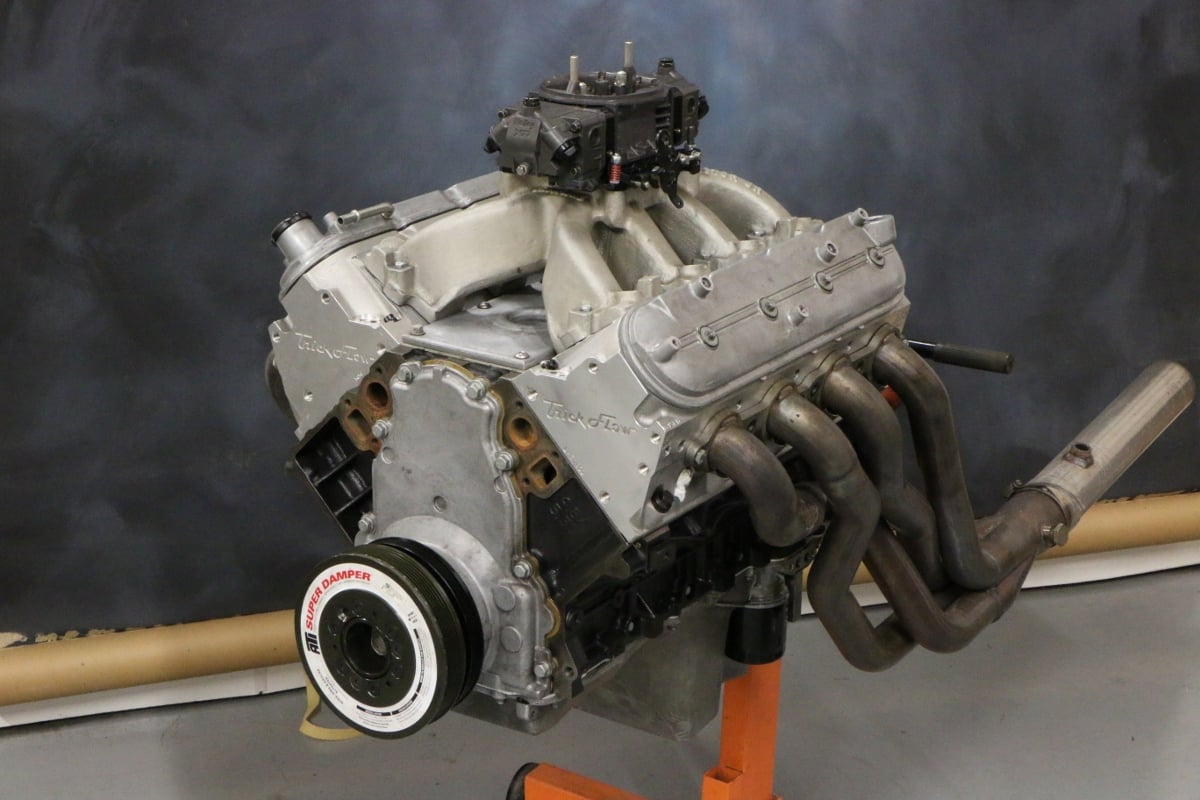
The only thing better than adding an old-school, carbureted LS to your muscle car is adding one with some serious grunt.
Words by Richard Holdener
Though the new LT generation of small blocks has been with us for a few years now, the Chevy camp seems to be divided between the old-school, original small block, and the wildly popular, new-school LS. The motto for today seems to be let’s LS everything, but don’t be one of those guys doomed to forget the past.
The original mouse motor was a tough act to follow, having chalked up wins in nearly every form of professional motor sports. Ask any Chevy enthusiast about their favorite ride, and chances are high it had a carbureted small block under that muscle car hood. The modern LS took over the reins from the small block and never looked back. With even greater factory potential — and ample availability of performance parts — the LS was every bit the worthy successor. It is with this understanding that we decided to build a motor that combined old-school displacement and induction with new-school technology.
When building any performance combination, enthusiasts look for one thing, more power! One of the easiest and most effective routes to increased performance is displacement. Remember this simple rule: It is always easier to reach any given power goal with a bigger motor. A little math demonstrates what we mean here. Using a power goal of 500 hp as the target, we see that producing said 500 hp with a stock displacement 5.3L (324c.i.) will require a specific output of over 94 hp per liter, or 1.54 hp per cubic inch. While certainly possible, these are some serious specific outputs likely requiring plenty of compression, wild cam timing, and lots of head flow, not to mention elevated engine speeds.
By contrast, increasing the displacement of our motor from 5.3L to 6.27 liters (383c.i.), results in a drop in the specific output (required to reach our goal) to 79.7 hp per liter, or 1.31 hp per cubic inch. These are much more realistic numbers for a street motor that can be made to produce peak power below 6,500 rpm. As we know, engine speed goes hand in hand with cost and potential problems, and is inversely proportional to longevity.
With math clearly on our side, we selected 383c.i. as our target displacement. Besides, the 383 was the most common stroker configuration for the original mouse motor, and one of our goals was to add some old-school flavor to the modern LS.
Though our LS and the original small block shared common cubes, the LS achieved this with a different combination of bore and stroke. The small block relied on a slight increase in bore from 4.00 to 4.030, combined with a jump in stroke from 3.48 inches to 3.75 inches (from the original 400 small block). By contrast, the (originally smaller 5.3L) LS 383 combined a more sizable increase in bore size from 3.78 inches to 3.905 inches with an ever greater increase in stroke, from 3.622 inches to 4.00 inches.
The 4340 forged stroker crank came from the boys over at Speedmaster, while the 6.125-inch forged rods and 3.905 flat-top pistons came courtesy of K1 and Wiseco. Sealing in all the power was a set of Total Seal rings. In addition to achieving our desired displacement, the 383 short block was plenty stout, capable of easily supporting not only our target of 500 hp, but plenty more should we opt for boost or nitrous at a later date.
With the 383 stroker assembled, we selected the important bits, namely the heads, cam, and intake. The first of our power producers to be installed was the camshaft. Looking to balance the performance and drivability of our stroker, we limited cam selection to a reasonable hydraulic roller. The additional displacement meant we were free to step in cam timing (relative to the stock 5.3L), but care was taken not go too wild.
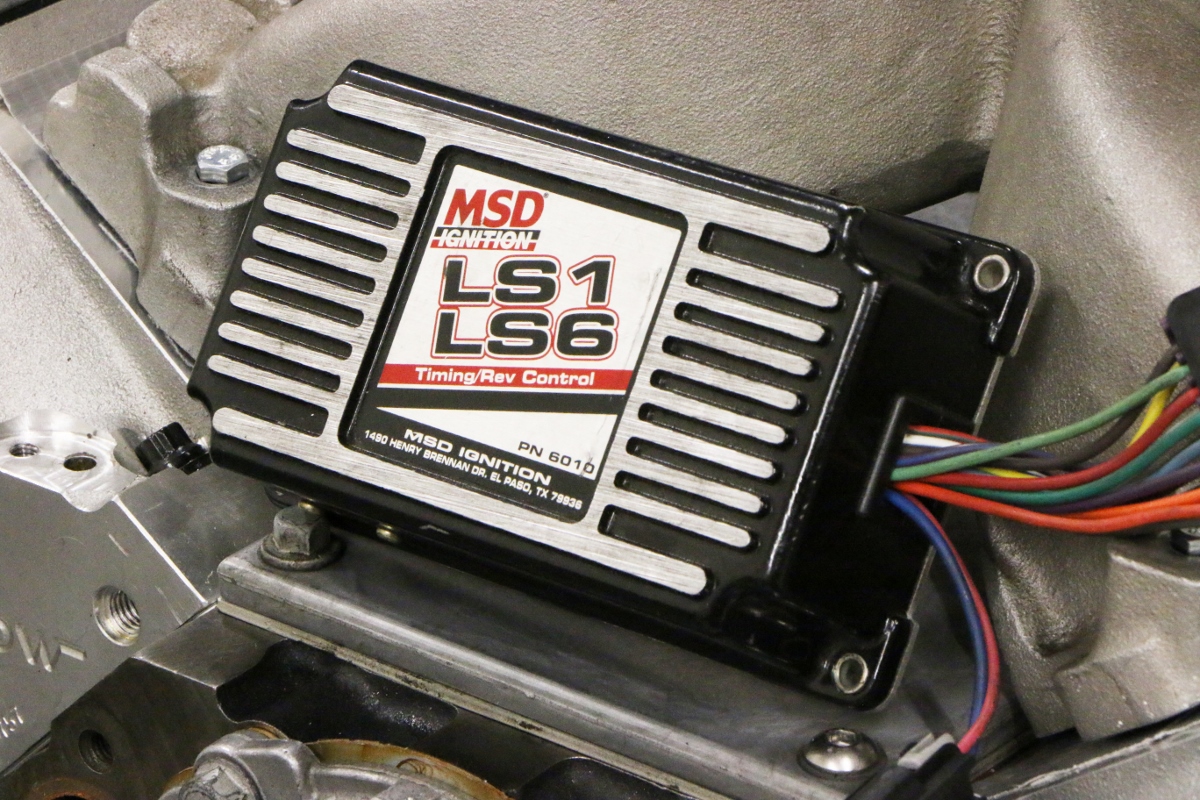
This MSD ignition controller plugged right into the factory sensors and coil packs, allowing us to dial in the desired ignition timing curve for our carbureted LS.
With our goals clearly in mind, we selected an LSR cam from the COMP Cams cathedral-port listings. The 281LR HR13 (pt# 54-459-11) featured a healthy .617/.624 lift split, a 231/239 duration split, and an idle-friendly 113-degree lsa. The high-lift cam worked well with the TFS Gen X heads we selected, while the duration figures allowed the motor to rev cleanly past the 6,500 rpm mark. COMP Cams also supplied a new set of hydraulic roller lifters (pt# 850-16), a set of Magnum pushrods (7.45 inches in length), and a trunnion upgrade for the factory roller rockers.
Wanting plenty of flow for the extra inches, we replaced the factory 706 heads with a set of 225 GenX heads from TFS. The CNC procedure applied to the GenX heads resulted in intake port volumes of 225cc. When combined with the new 2.055-inch stainless-steel valves and the CNC chamber work, the results were peak flow numbers of over 330 cfm at just .600 lift. The exhaust flow was equally impressive through the 1.46-inch valves. More than just peak numbers, the TFS Gen X heads offered massive flow through the entire lift range.
In addition to the full CNC porting, the Gen X heads also featured revised valve angles (from 15 to 13.5 degrees), altered spark plug locations, and fortified rocker-arm mounting pads. The heads were supplied with a dual spring package with sufficient coil-bind clearance and spring rate for our .624-lift cam and even titanium retainers to maximize rpm capability. What all this meant was that the TFS Gen X 225 heads flowed enough to support more than 660 hp! With more cylinder head than our street stroker motor could possibly use, they were secured to the 383 short block using a set of ARP head studs and Fel Pro MLS head gaskets
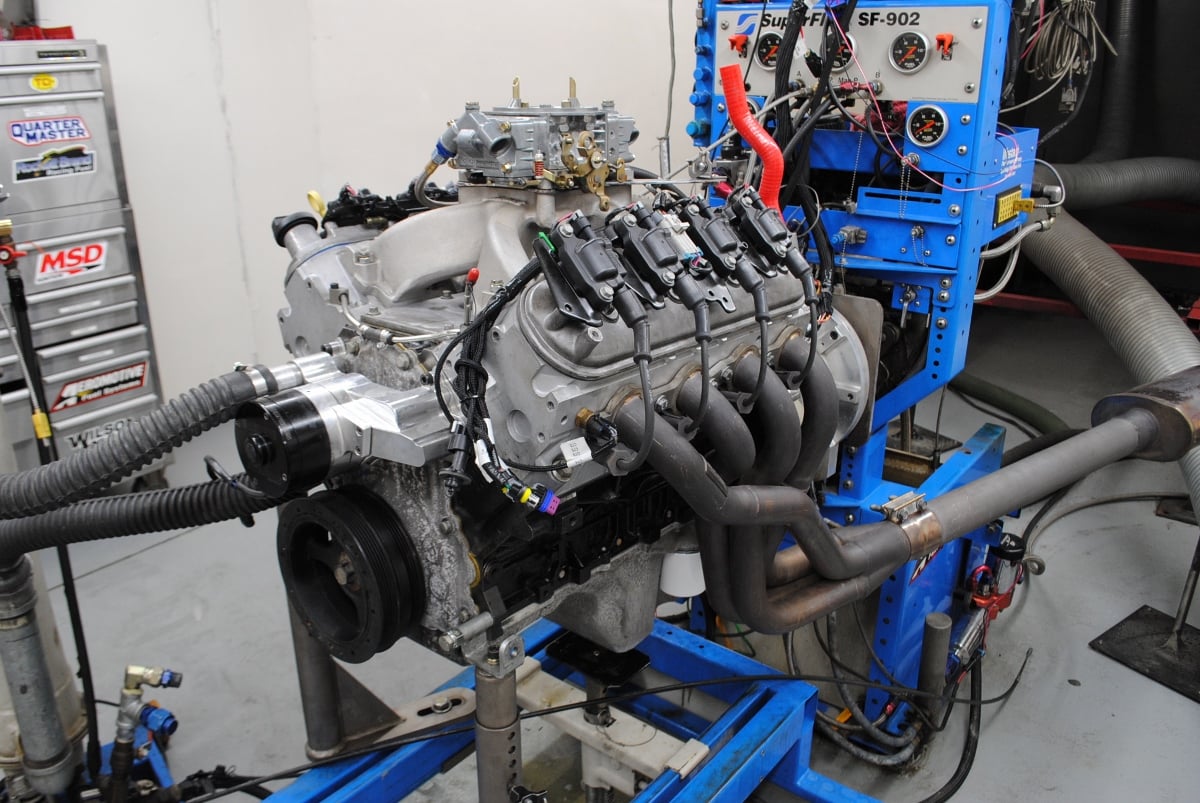
Run on the dyno, the carbureted 5.3L produced peak numbers of 339 hp at 5,500 rpm and 352 lb-ft of torque at 4,700 rpm.
Currently equipped with a forged short block, COMP cam, and CNC-ported GenX heads, the only thing missing was the right induction system. As another nod to the original small block, we chose to replace the factory (or aftermarket) fuel injection with a simple, but effective carburetor. Looking at our choices, we selected a popular combination for a hot street small block, namely the Edelbrock Victor Jr. intake matched with a Holley four-barrel. For this 383, the single-plane, aluminum intake was combined with a 650 Holley Ultra XP. Lightweight and powerful, the Ultra XP was the latest and greatest carburetor offered by Holley, and once you pick one up, you will never want to handle an original Holley ever again — they are that light.
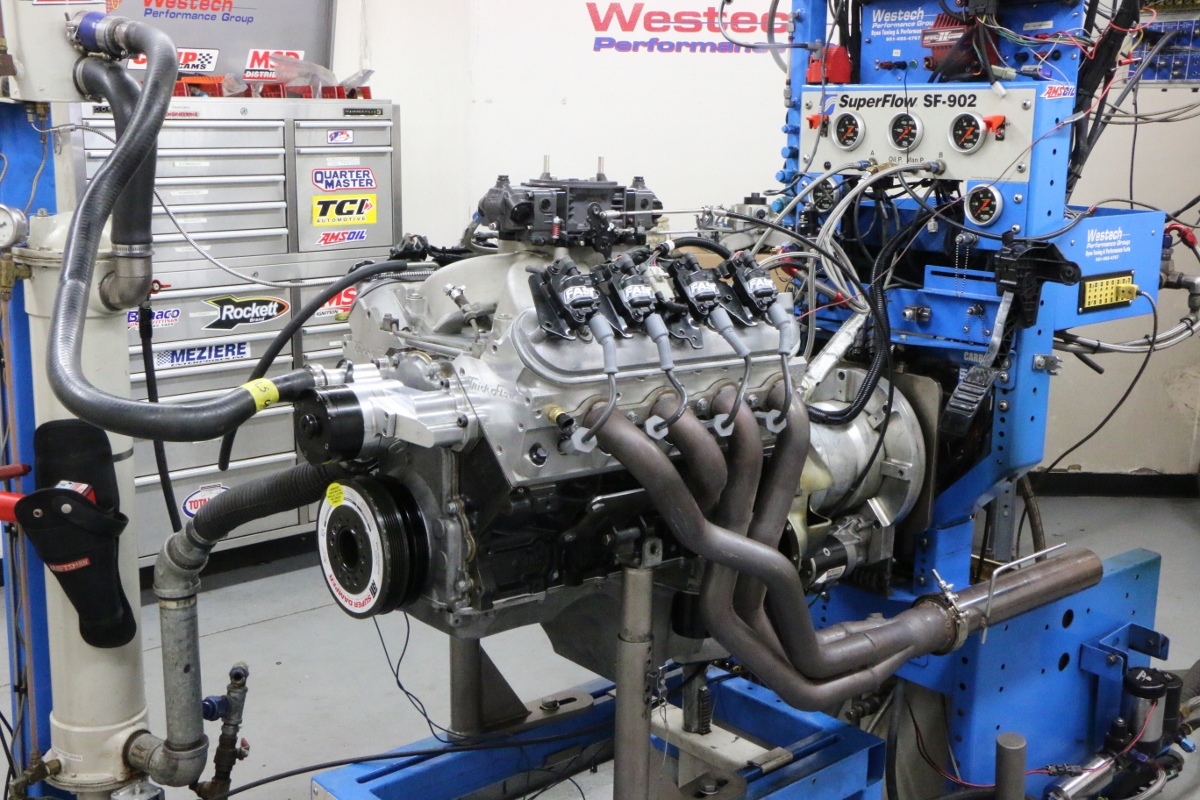
By contrast, our old-school 383 stroker thumped out 529 hp at 6,400 rpm and 491 lb-ft of torque at 5,000 rpm. Who wouldn’t want an extra 190 hp and nearly 140 lb-ft of torque?
Since the LS was originally fuel injected, we had to come up with a system to run the carbureted combo, but MSD already had us covered. Their ignition controller plugged right into the factory coil packs, cam, and crank sensors and allowed us to dial in the desired ignition curve. The system even supported a MAP sensor to combine load-based ignition timing tables — pretty slick stuff!
The 383 was nearly complete, requiring only a few extras before heading off to the dyno. We also had a stock 5.3L to serve as a baseline. It is always a good idea to know where you came from to see how far you’ve come. Completing the old-school 383 LS was an ATI damper, FAST ignition coils, and Hooker long-tube headers. The damper was replaced since the high-mileage originals have been known to come apart on the dyno. The FAST coil packs ensured plenty of spark energy, and the 1 7/8-inch Hooker headers allowed all of those wonderfully spent gases to escape.
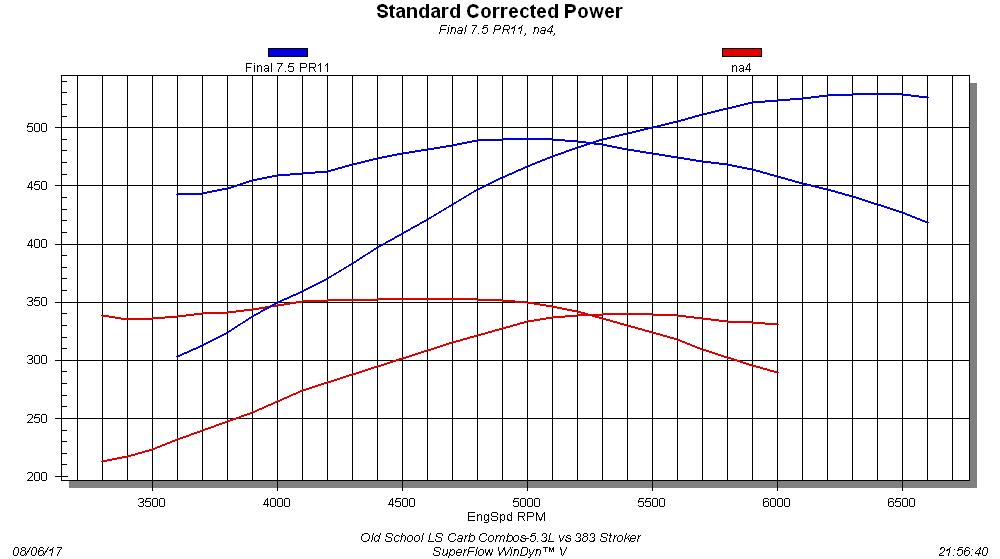
5.3L vs 383 Stroker
Both the 5.3L and 383 stroker were equipped with the same carbureted induction system that included an Edelbrock Victor Jr. intake and Holley 650 Ultra XP carburetor. Run with an MSD ignition controller, the otherwise stock 5.3L produced 339 hp at 5,500 rpm and 352 lb-ft of torque at 4,700 rpm. Thanks to the extra displacement, wilder cam timing, and free-flowing TFS heads, the 383 produced significantly more power. The peak numbers checked in at 529 hp at 6,400 rpm and 491 lb-ft at 5,000 rpm. The stroker upped the torque ante by a minimum of 100 lb-ft over the stock-displacement 5.3L, with differences topping 170 lb-ft. Strokers rule!
Before running the 383 in anger, we installed the Victor Jr. and 650 Holley on the stock (well-worn) 5.3L and ran it on the dyno. In a carbureted trim, the 5.3L produced 339 hp at 5,500 rpm and 352 lb-ft of torque at 4,700 rpm. The time spent on the old-school 383 build was well worth it, as the 383 upped the power ante to 529 hp at 6,400 rpm and 491 lb-ft of torque at 5,000 rpm. The displacement and mods to the 383 improved the power output of the original 5.3L by 190 horsepower and nearly 140 lb-ft of torque. Just as they did with the original, old-school small block, 383 LS strokers rule!
Sources: Comp Cams, compcams.com; Edelbrock, edelbrock.com; FAST, fuelairspark.com; Holley/Hooker, holley.com; K1, K1technologies.com; Lucas Oil, lucasoil.com; MSD, msdignition.com; Speedmaster, speedmaster79.com; Total Seal Rings, totalseal.com; Trick Flow Specialties, trickflow.com; Wiseco, wiseco.com
















